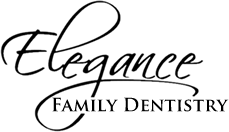One way to protect your teeth and gums is to limit plaque, the sticky, colorless substance that coats your teeth. Plaque contains bacteria that release acid and damage teeth if you aren’t vigilant about oral hygiene. Over time, plaque hardens into tartar or calculus, which has to be removed by a dental professional. Patients can control plaque in their mouths by:
Frequent Brushing
Although friends and family may not notice if you don’t brush twice a day, your teeth will feel the impact. Use fluoride toothpaste and a soft-bristled brush for maximum effectiveness.
Regular Flossing
Just brushing won’t clean the space between teeth, an area that plaque can easily reach. Flossing once a day will clear out the plaque before it can wreak havoc on your teeth.
Routine Dental Checkups
Even with optimal home care, you will miss some plaque. Because it hardens into tartar, you need to visit the dentist one to two times a year so that the staff can remove any calculus deposits.
Healthy Eating
Before toothpaste and toothbrushes existed, people ate crunchy fruits and vegetables to help keep teeth clean. Cucumbers, apples, and carrots naturally scrub plaque off teeth, protecting them from decay.
Limited Junk Food
Simple carbohydrates, like the ones found in candy, chips, and soda, give bacteria a great food source. Because these foods are often sticky or soft, they stick to teeth and create problems.
Other Options
Some people may benefit from adding a mouth rinse to their routines. Remember, mouthwash doesn’t work as a substitute for brushing and flossing. Because the back teeth have deep pits and fissures, dental sealants can be applied to cover the area and prevent plaque development.
Your oral health is our priority at Dentistry on King – Dr. David Cheng – Toronto, Canada






